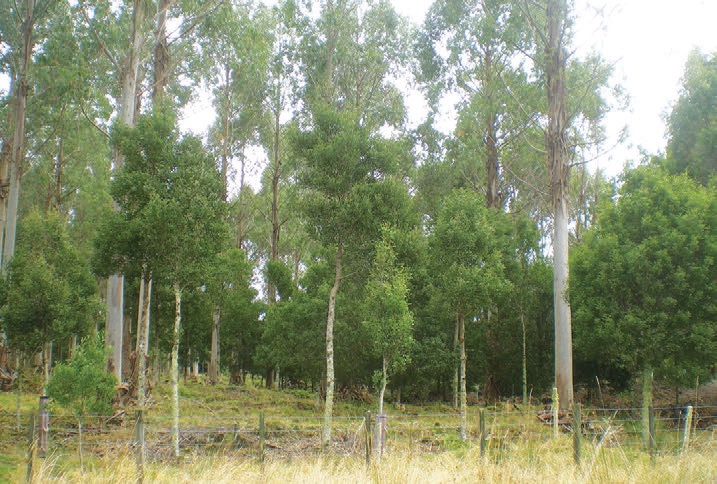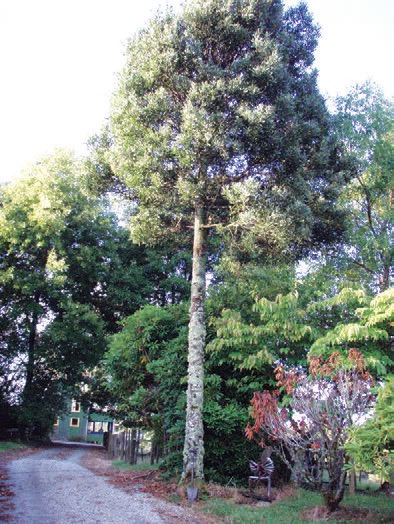A passion for trees
Catherine van Paassen, New Zealand Tree Grower May 2010.
We have just over 17 hectares near Hokitika with about half planted in forest. Most of it is Eucalyptus nitens, some as shelterbelts and some thinned at 12 to 15 years to 12 metre spacing, with pasture underneath. We also have other eucalypt species – some E. ovata for firewood and a few E.muelleriana. There is also a patch of black wattle, but as was predicted by a local, these proved brittle and many have had the tops split and broken by the wind. We also have about 300 radiata pine.
The long term planting is blackwood, Acacia melanoxylon. We visited Tasmania in 2000 and obtained seed and have a number of varieties from different provenances, as well as some unknown, probably Chilean. Some of these blackwood are planted under the eucalypts, and some under the radiata. Some were inter-planted with the black wattle and some open grown.
About a third of the property is open pasture for finishing beef, at present about six beasts a year. We also have 50 sheep which are our partners in weed control under the trees, a noticeable number of hares and a thriving population of weka.
Continuous development
We have been on the property 13 years and it has been one continuous development phase, largely funded by off-farm income, assisted by firewood and animal sales and contracting work done by my partner Glenn. Virtually our trees are pruned and, where possible, fertilised at appropriate intervals.
Drying of eucalypt firewood can talk up to two years, to get the most efficient combustion and burning conditions. Educating people about buying and stacking it a season ahead is quite important To help keep firewood at good quality low moisture standards, a large new special purpose drying shed has just been completed, and a range of labour saving equipment such as stackers and vehicles obtained.

We use wood ourselves while a good stock of E. nitens is part way through the seasonal drying process for future sale to customers. We will also soon start thinning our mix of stands for future firewood production.
An acacia that survived the odds
When Glenn and I moved on to our property in 1997 it was overgrown with gorse and other weeds. Most of the first six months was devoted to scrub cutting. The soils were leached podzols on an iron pan, scraped off in places by the previous owner to hard clay.

One of our discoveries was a root-trainer tray of Tasmanian blackwood that had apparently been dumped beside the track from the shed to the house. Many of the seedlings showed a strong will to live, but one was a little ahead of the rest. The competing smaller stems were cut back, but coppiced well.
Form pruning and leader selection was applied, and it took a few years for the kink in the stem to disappear. This tree also benefited from applications of fertiliser using the washout of the bag or spreader used to carry fertiliser to the other trees planted between 1997 and 2001.
In March 2010 we estimate this tree is now 15 years old, and its diameter at breast height is 32 cm and the stem is straight.

 Farm Forestry New Zealand
Farm Forestry New Zealand